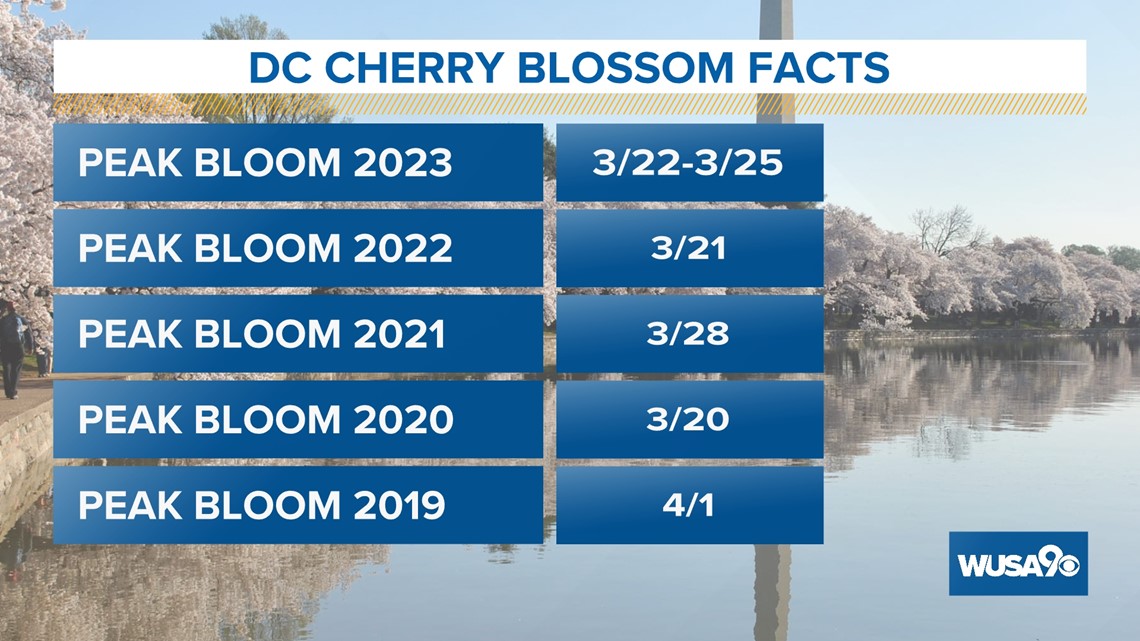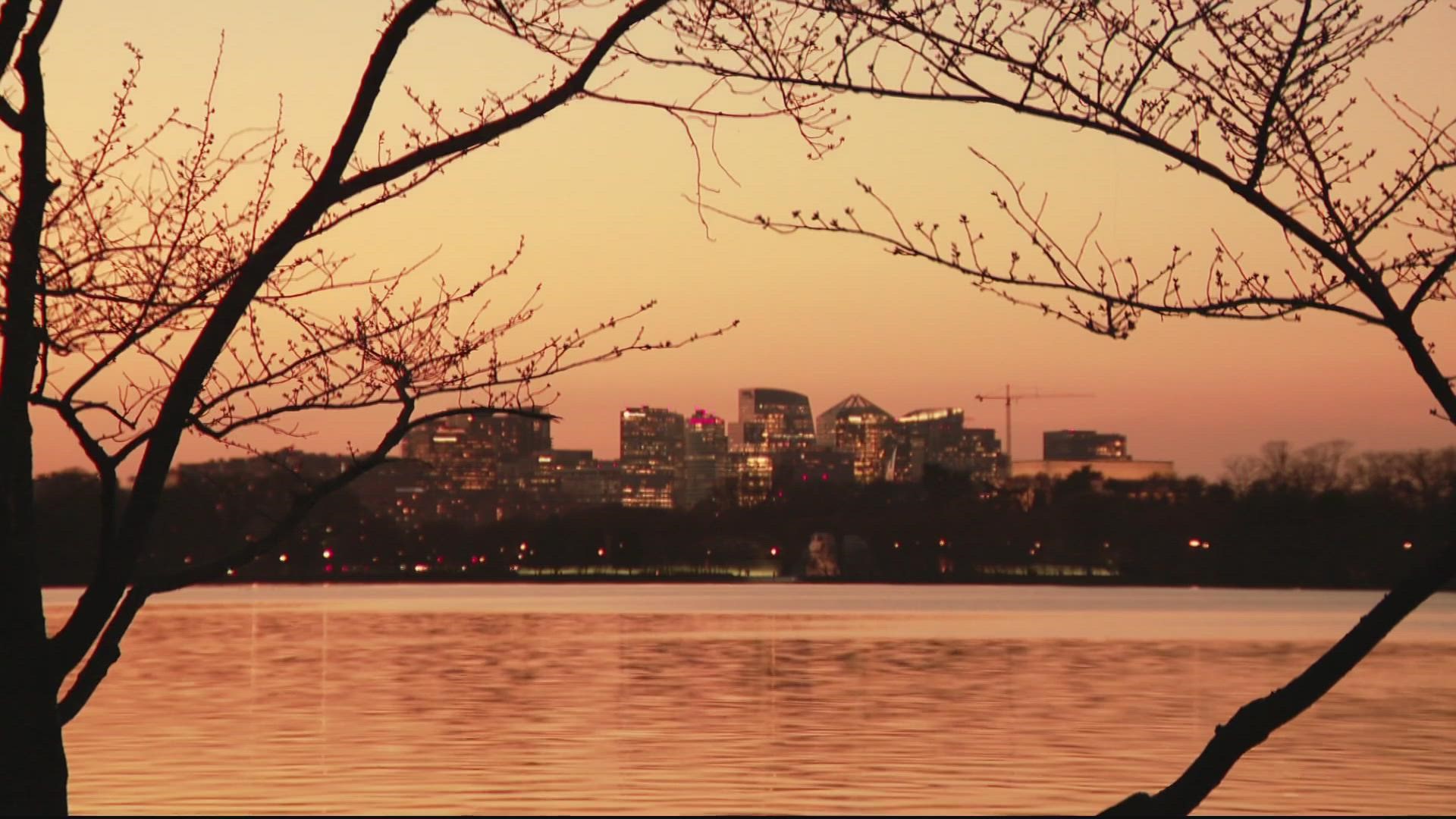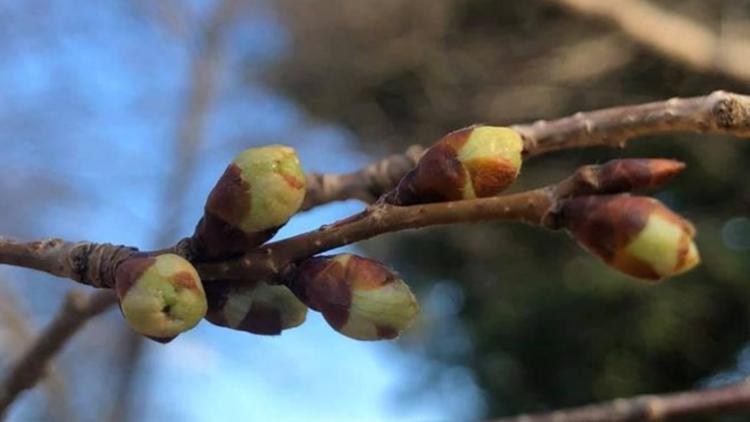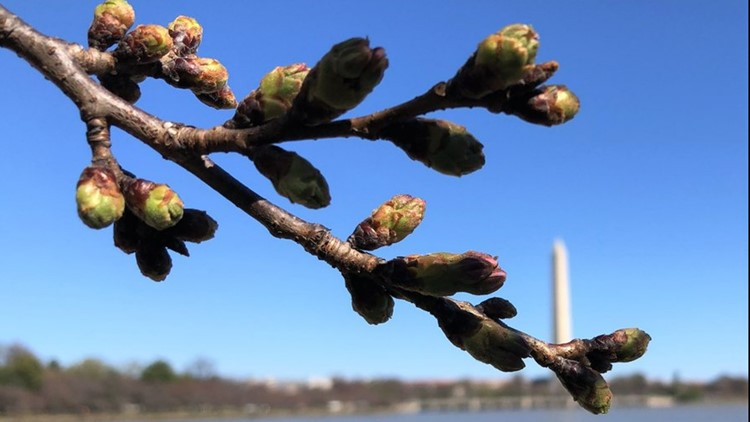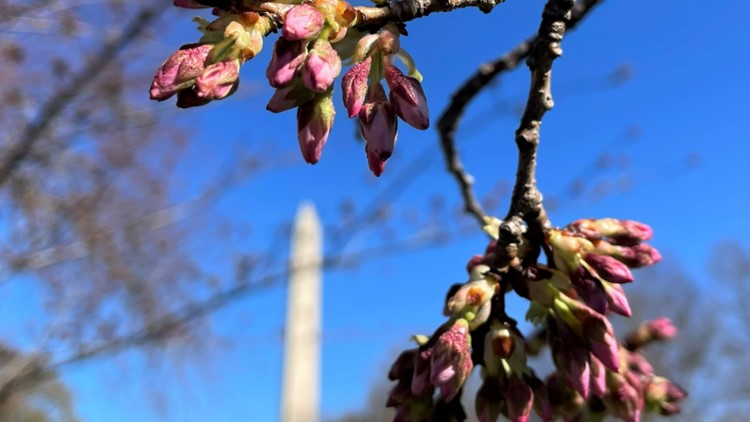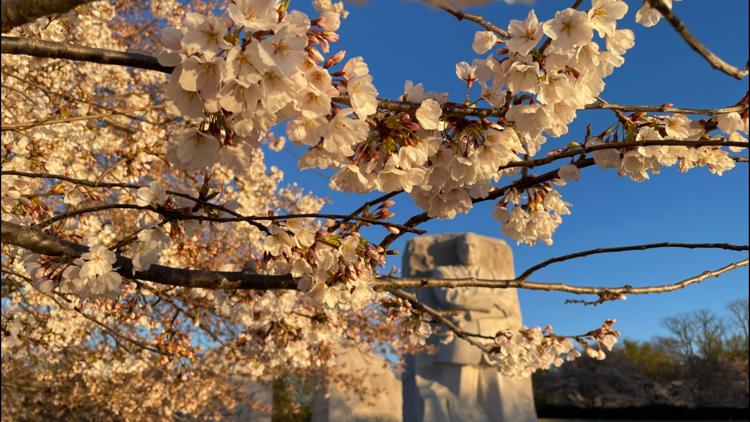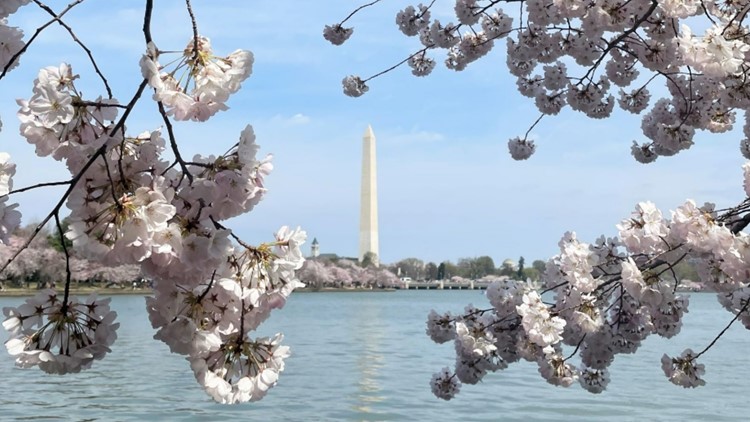WASHINGTON — D.C.'s cherry trees are halfway to peak bloom! They reached stage three (extension of florets) on Tuesday, March 7, according to the National Park Service.
The Park Service said the trees began budding on Feb. 23, and reached stage 2 of the six-part process on March 1. The trees are expected to reach peak bloom between March 22-25 this year. That's earlier than the historic average peak of April 4, thanks in part to a warm winter.
Here are the six stages NPS tracks:
- Green bud
- Florets visible
- Extension of florets
- Peduncle elongation
- Puffy blossom
- Peak bloom
Warm weather is one of the biggest environmental factors that contribute to the blossoming trees. If you have seen plenty of other varieties of flowering trees perk up around the District in the past few weeks, so has the National Park Service. That is another factor that goes into predicting the peak. In addition, there is also the indicator tree, which is known to bloom about two weeks ahead of the others.
Tracking the DC cherry blossoms
NPS also has teams of scientists studying the impact of climate change on cherry blossoms, and what peak bloom data can tell us about climate change.
"Cherry tree dates vary from year to year, but the long-term trend shows earlier and earlier blooming," said NPS climate change scientist Patrick Gonzalez.
Since 1946, D.C.'s average temperature has increased by 1.6 degrees C per century, which is double the global rate. In flowering trees, heat breaks winter dormancy, so scientists believe earlier cherry blooming is caused by climate change.
"If we don't reduce emissions from cars, power plants and deforestation additional warming could advance spring blooming by another week to month by the end of the 21st century," Gonzalez said.
Flooding at the Tidal Basin is also a problem for the cherry blossoms. NPS says cherry trees are meant to grow on dry land and require fresh water. When the Tidal Basin floods, freshwater along with brackish water flows over the roots of the cherry trees. Brackish water is a mix of salt and fresh water.
The National Park Service is concerned that salt intrusion in the soil can weaken and eventually kill a cherry tree.

